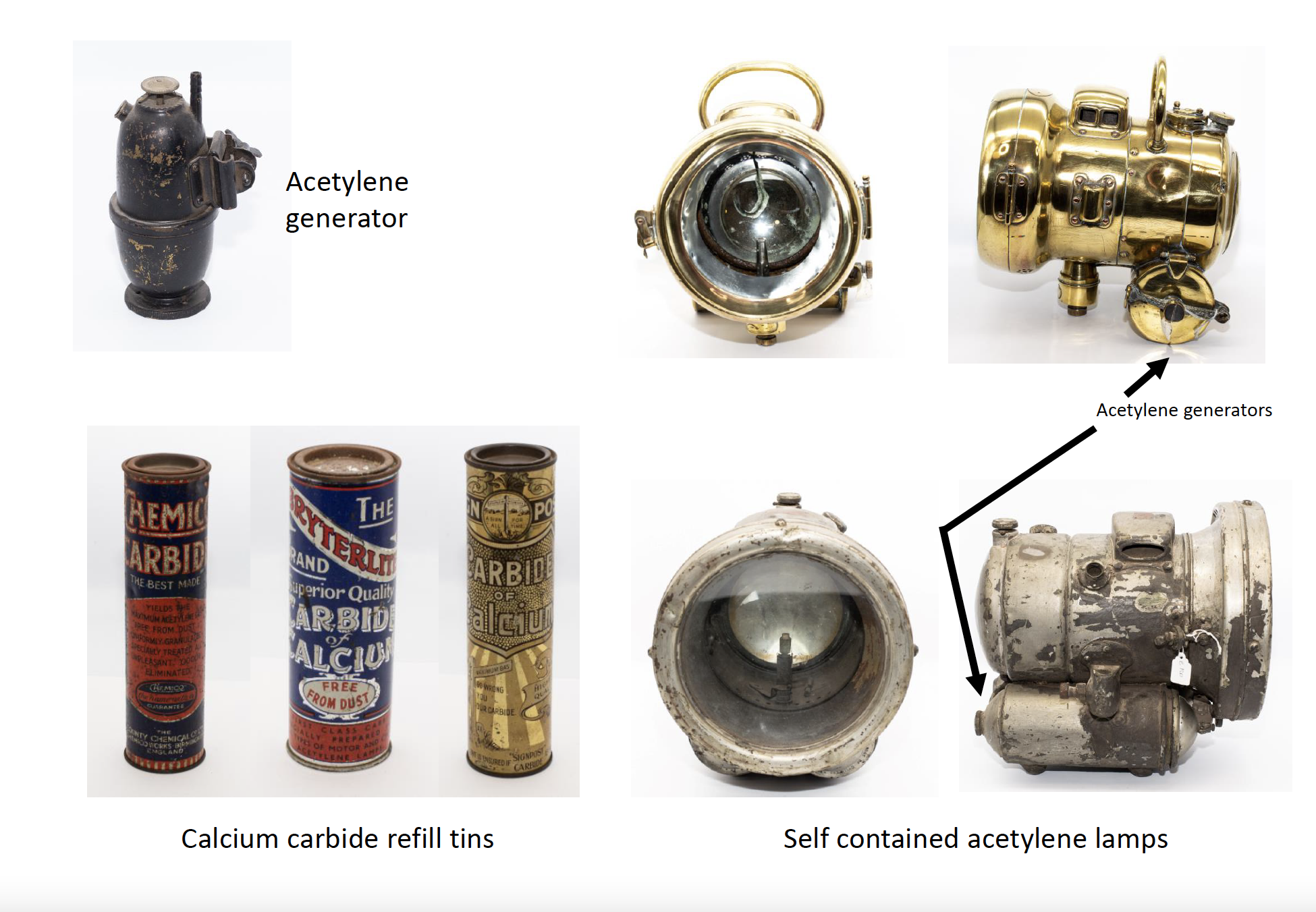
30 Jan Stories From the Stacks – Shedding Light on Memorabilia
A regular series about the museum’s motoring memorabilia and behind-the-scenes activities, compiled and written by FMM’s Assistant Curator Sian Theron. This month, Sian looks brightly ahead to the New Year…
Today, we live in world where, in many vehicles, when we need our headlights on, either they come on automatically or, at the most, we flick a switch and Voila! we have light. But this was not always the case and early motorists had a rather torrid time making sure that their paths were lit at night.
Very early cars were in a time before the advent of vehicle electrics and so they were fitted with candle or kerosene lamps. Then acetylene lamps came along, which ran on calcium carbide (CaC2) and water (H2O) that, when combined, cause a reaction that produces acetylene (H2C2) gas. You may well have wondered what the strange looking brass and metal contraptions are that sit on the running boards of many a veteran vehicle.
These are acetylene canisters that hold calcium carbide in one section and a vial of water in another. The water is allowed to slowly drip onto the calcium carbide crystals producing acetylene gas that is kept under pressure. When required the gas is released to travel up a pipe to the lamp which is then lit by the motorist when required. The resultant flame when the gas was lit, was clean and bright. If a brighter light is needed, more water can be released.
It is a rather ingenious little item, but it does come with a touch of danger as the canisters were wont to explode if the water drops were not turned off when the lamps were not in use!
To provide a better idea of the danger, acetylene is a highly flammable, extremely hot, bright and reactive gas and is often used in combination with pure oxygen to create oxy-acetylene that produces a flame that can be used for welding.
Even with the danger, these lights were popular due to how clean the flame was in addition to the very bright light it would produce. Additionally, unlike candles, wind was not as much of a factor, and unlike kerosene lamps, spillage was very rare.
Calcium carbide lamps were often used in mining and are still in use today by some cavers who prefer the reliability of brightness to battery charged torches.FMM has a fantastic collection of calcium carbide canisters, calcium carbide lamps, and we even have a few fantastic old tins in which motorists could purchase calcium carbide as well.
Due to the danger of acetylene we are unable to light any of our own lamps, but to provide you with an idea of the type of illumination one of the lamps can provide, head over to the YouTube video from the Royal Society of Chemistry. And for a great visual on how the drip mechanism works visit the Science World YouTube video.



